
Funding: DFG Cluster of Excellence, 01/2019 – 12/2025
CeTI is a cluster of excellence of the TU Dresden. The central vision is to enable people to interact in quasi-real time with cyberphysical systems (CPS) in the real or virtual world via intelligent wide area communication networks in order to enable people and machines to exchange skills and expertise globally.

Funding: BMFTR, 08/2021 – 08/2025

Funding: BMFTR, 11/2023 – 10/2027
launchhub42, positioned at the heart of the University of Technology Dresden, is an innovative startup incubator of the two universities of excellence – TU Dresden and TU Munich – designed to bridge the gap between ambitious students and the forefront of technological advancements. With a primary focus on the development of cutting-edge communication networks for robotics, the metaverse, and human interaction, launchhub42 is at the vanguard of fostering the next generation of tech pioneers. Currently collaborating with 20 startups, the incubator provides an exhaustive suite of resources including specialized training, essential information, and unparalleled access to advanced technologies that are typically out of reach for burgeoning enterprises. Housed in a conspicuous building within the university’s premises, launchhub42 offers a plethora of facilities including meeting spaces, office areas, and demonstration zones, all meticulously designed to facilitate engagement with potential customers and partners. By nurturing talent and innovation, launchhub42 aims to catalyze the transformation of visionary ideas into real-world solutions, thereby shaping the future of technology.

Funding: EU FET Flagships, 2022
The Quantum Internet Alliance (QIA) targets a Blueprint for a pan-European Quantum Internet by ground-breaking technological advances, culminating in the first experimental demonstration of a fully integrated network stack running on a multi-node quantum network. QIA will push the frontier of technology in both end nodes (trapped ion qubits, diamond NV qubits, neutral atom qubits) and quantum repeaters (rare-earth-based memories, atomic gases, quantum dots) and demonstrate the first integration of both subsystems. We will achieve entanglement and teleportation across three and four remote quantum network nodes, thereby making the leap from simple point-to-point connections to the first multi-node networks. The demonstrations will include the key enabling capabilities for memory-based quantum repeaters, resulting in proof-of-principle demonstrations of elementary long-distance repeater links in the real-world, including the longest such link worldwide.

Funding: BMFTR, 03/2024 – 02/2027
QUARKS targets various social groups to provide them with a comprehensive understanding of quantum resources for future quantum communication networks using innovative dialogical and participatory outreach formats. The aim is also to convey technological knowledge about quantum resources for the communication networks of the future in a way that is appropriate for the target social groups (e.g., school students, specialists from the business world, etc.). The projects also aims to realise experimentally the integration between quantum and non-quantum computing for in-network computing paradigm of future 6G-quantum communication networks.

Funding: Transnational Scientific Cooperation Initiative by the Free States of Saxony and Bavaria, 2024 – 2027
Despite rapid progress in artificial intelligence (AI), serious issues with computing infrastructures and networked systems have emerged globally, potentially restricting AI and future technologies like communications, medicine, and robotics. AI applications consume enormous amounts of energy, risking standstills if energy supplies falter. To address this, researchers from TUD Dresden University of Technology, Ludwig-Maximilians-Universität München (LMU), and the Technical University of Munich (TUM) are collaborating on the “gAIn” (Next Generation AI Computing) pilot project. The main goal is to investigate new computing platforms, such as analog and biological computing, as well as the mathematic foundations of AI to address these problems.

Funding: BMFTR, 07/2022 – 12/2025
The goal of the “6G-Access, Network of Networks, Automation & Simplification (6G-ANNA)” project is to develop a holistic design for the sixth generation of mobile communications that includes a closed end-to-end architecture. To this end, the fundamentals of radio access are first investigated, and innovative protocols and signal processing algorithms are designed and implemented. This is followed by the investigation of appropriate network management and orchestration approaches. The goal is to simplify and improve the interaction between humans, technologies and the environment. One contribution is made by new sensors and algorithms for the recognition of human movements. For example, digital twins of complex machines in manufacturing can be precisely mapped to control them remotely. Another focus is the investigation of 6G as a “network of networks” in which – similar to the Internet – different closed networks are flexibly interconnected. Here, the focus is on security aspects and resilience. Overall, flexibility and the reduction of energy consumption while maintaining the performance of the network are important goals in all research work – from individual radio access to the integration of multiple networks.

09/2014

Funding: BMFTR, 05/2022 – 12/2025
The project researches quantum bridging technologies with application potential for future generations of communication networks and towards the quantum internet. For this purpose, a holistic concept for a network architecture based on Physical Layer Service Integration (PLSI) will be designed. The compatibility with 6G networks will be ensured. The concept will be made accessible and evaluated by emulating the entire quantum-classical network protocol stack. Concrete building blocks of the roadmap are Entanglement-Assisted Data Transmission (ED) and Oblivious Transfer (OT). The project addresses secure and efficient quantum-classical communication networks, also considering quantum-classical error-correcting procedures for reliability.

Funding: BMFTR, 07/2022 – 06/2026
In the DAKORE project, one of the winners of BMBF’s 2021 GreenICT innovation competition, highly energy-efficient radio access networks will be researched. In particular, the project focuses on the redesign and intelligent parameterization of power amplifiers in base stations (in particular 5G GNodeB). The goal here is to 1. implement power amplifiers that operate with high efficiency over broad ranges of output powers, 2. intelligently control the output power of multiple, distributed power amplifiers, using novel machine learning methods, and 3. to run these algorithms on optimized, highly energy-efficient compute hardware. Through this, we hope to save up to 60% of the energy consumption of future radio access networks, substantially contributing to a greener future. In this context, the Deutsche Telekom Chair for Communication Networks will focus on the simulation of radio access networks and the optimization of network parameters (such as the output power), using machine learning approaches.
Funding: DAAD, 07/2022 – 07/2027
SECAI, a DAAD-funded Zuse School in Germany, facilitates AI education and research. Hosted by TU Dresden and Leipzig University, SECAI emphasizes the integrated approach of university studies, research, and applications, creating diverse career opportunities for young talents to contribute to AI’s societal and economic advancement. The program focuses on two core themes: developing innovative composite AI methods and integrating AI algorithms into customized microelectronics and intelligent devices. SECAI leverages the collaborative research of partner universities and the regional strengths of Saxon high-tech sites in Dresden and Leipzig.

Funding: BMFTR, 08/2022 – 07/2026
The BMBF project Quantum Internet of Things (QUIET) aims to develop a hybrid quantum-conventional communication network. In the interaction of distributed quantum states and conventional transmission, (quantum) sensors are to be networked. In this way, the performance and security of the network will be significantly increased. All layers of the network, from the physical layer to network protocols, will be considered. In the project, leading research groups from the fields of quantum communication and network technology are working intensively with companies from the telecommunications sector with the “Quantum Communication Innovation Hub”.

Funding: BMFTR, 08/2022 – 07/2026
The BMBF Quantum Wireless Campus Network (QD-CamNetz) project aims at demonstrating the first 5G quantum campus network. Quantum technologies will be seamlessly integrated into the existing 5G campus network to achieve unprecedented resilience and time synchronization, which are the pillars of future Industry 4.0, tactile internet and future 6G networks. To this end, quantum routers compatible with existing communication infrastructure will be developed and realized for use outside the laboratory. For this purpose, on the one hand, the entire quantum protocol stack will be researched and developed, which not only regulates the communication between the quantum routers, but also provides functions for applications, for example. On the other hand, the associated novel network architecture must also be developed and implemented. The result is a test platform for testing real industrial application examples.

Funding: BMFTR, 10/2022 – 09/2026
The BMBF project “6G-Quantum Security (6G-QuaS)” aims to develop a hybrid quantum-classical wired industrial network. Here, the quantum information is to be stored continuously in the phase and amplitude of the light and not, as is common in current research, discretely in its polarization. This should result in significantly lower latency times and greater resilience against attacks while maintaining the same level of security. The project will develop the necessary protocols as well as a demonstrator. In the project, leading research groups from the fields of quantum communication and network technology are working intensively with companies from the telecommunications sector and the “Quantum Communication Innovation Hub”.
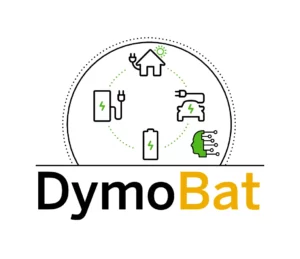
Funding: BMWE, 10/2022 – 09/2026
The power grid ecosystem is moving towards a decentralised energy supply and distribution system. Households can operate independently of electricity providers and sell energy back to the main grid using renewable energy sources such as solar panels or wind generators, known as distributed energy resources (DERs). A competent communications infrastructure is needed to realise this transformation of the power grid. The introduction of the 5G standard in mobile networks facilitates the development of future energy management solutions. Furthermore, new technologies enable the development of intelligent algorithms for the control of future electricity grids. These include the Internet of Things (IoT), networking via mesh networks for remote monitoring of grid status and Artificial Intelligence (AI) for management and coordination. In Dymobat, a single-user controller is developed to manage the individual DERs. Then, a central control unit for synchronisation and optimisation of network operation within a small group of DERs, Microgrid, is designed. Subsequently, mobility algorithms are developed for the use of battery electric vehicles as mobile energy storage units, which enable temporary self-supply of sub-grids. The developed algorithms are tested, optimised and validated virtually in a testbed model using real input parameters. In the second step, a real testbed will be designed and installed, and the performance of the model-tested algorithms will be evaluated in a real test environment and further improved using the know-how thus acquired. The overall goal of the DymoBat project is to develop marketable solutions for future power grid management for the use of distributed energy resources based on the application of 5G technologies.
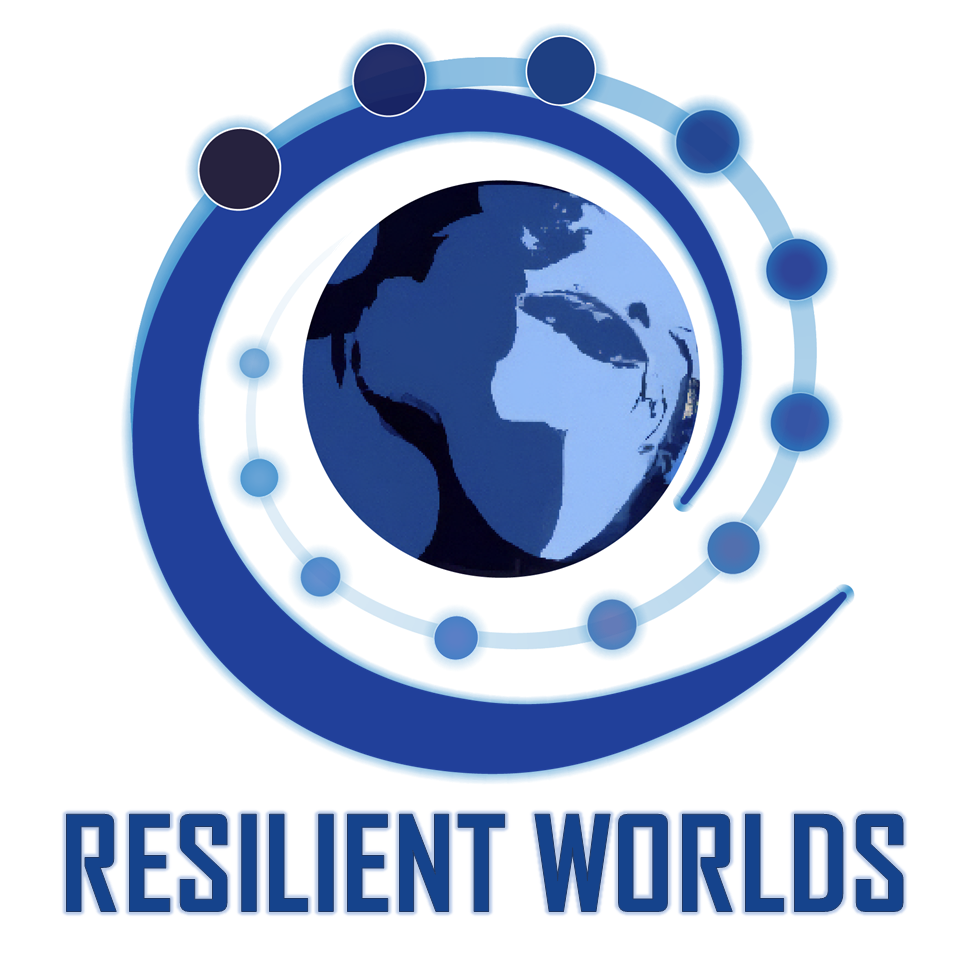
Funding: DFG, 01/2023 – 05/2027
Resilience was the main motivation to change the architecture from public-switched telephone networks to the current Internet. To further extend resilience, the IETF (IETF-icnrg) advocates for Information-Centric Networking (ICN). In this project, we expect two main contributions to improving resilience without disregarding other modern communication systems’ KPIs (e.g., latency, energy consumption, and costs). i.) extend the ICN concept for distributed coded computing, multipath coded transport, and distributed coded storage; ii.) find a unified coding for the three techniques mentioned above, resulting in the concept of “One Code to Rule Them All”. We rely on in-network computing to deploy coding for the three techniques (e.g., IETF-coinrg). To prove the performance of our proposed approach, we carry out theory, simulation, emulation, and implementation. We will give feedback on the latter one to the IETF community.

Funding: BMFTR, 01/2023 – 06/2026
The project aims to make quantum communication usable for public communication networks in research and industry by integrating quantum communication into future 6G networks and existing fixed networks. In this way, a quantum Internet is to be made possible in the near future. The focus is on the investigation, design and realization of an integrated end-to-end resilience for the future classical quantum Internet.
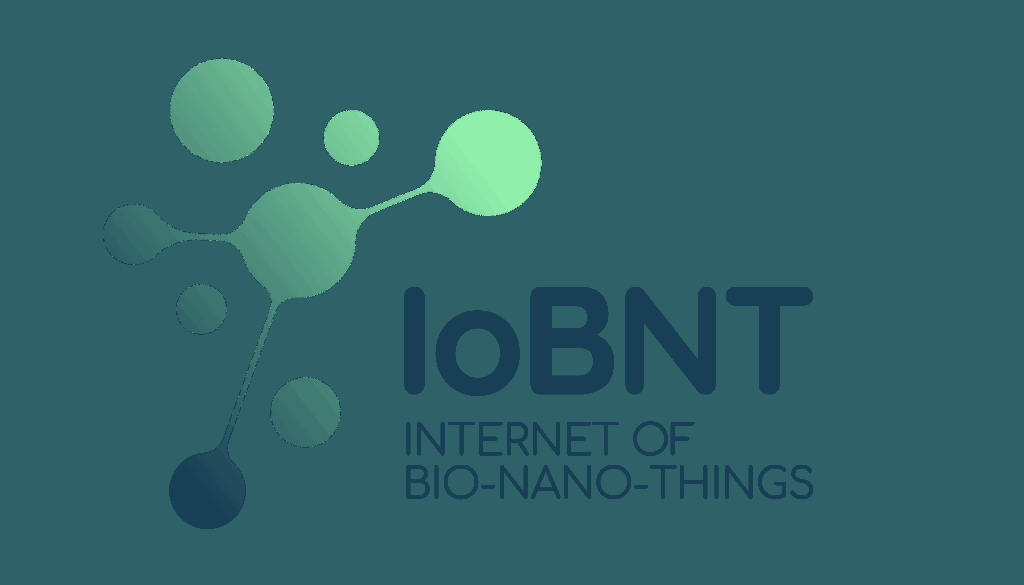
Funding: BMFTR, 01/2024 – 12/2026
Nano- or microscale communication nodes, designed for challenging environments, require alternative paradigms like molecular communication. Applications include medical nanobots in blood vessels, air-based systems, and macroscale industrial communication. Nano-sized particles, such as magnetic nanoparticles and biochemical molecules, serve as information carriers. Molecular communication complements traditional networks and is envisioned for 6G+ solutions. Our project focuses on developing an IoBNT for precision medicine and microscale industrial use, facilitating in vivo monitoring and actuation of infections through nanodevice communication with external gateways. The IoBNT supports data transmission and actuation commands between nanodevices and remote healthcare providers for disease treatment.

Funding: EU HORIZON-MISS-2023-CIT-01, 01/2024 – 12/2028
MOBILITIES aims to demonstrate cost-effective and feasible solutions for innovative passenger and freight mobility, fostering cities’ climate neutrality by 2030. Madrid and Dresden will lead 11 pilots with 27 solutions, utilizing electrification, automation, and connectivity. They will establish Urban Transport Labs as Innovation Hubs, with five Replication Cities (Ioaninna-Greece, Trencin-Slovakia, Espoo-Finland, Gdansk-Poland, and Sarajevo-Bosnia & Herzegovina) actively participating and becoming key players in their own designs.
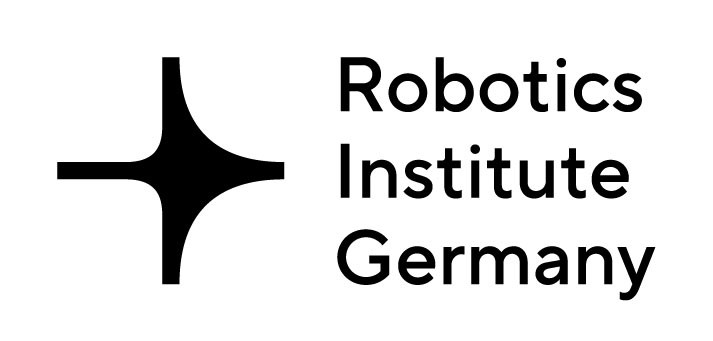
Funding: BMFTR, 07/2024 – 06/2028
The Robotics Institute Germany aims to position Germany as the global leader in AI-based robotics, supported by €20 million in funding from the German Federal Ministry of Education and Research. This initiative unites top universities and research institutions, leveraging their combined strengths to enhance the international competitiveness of AI-based robotics research in Germany. Key priorities include shared resources, collaborative infrastructure, and talent development to drive innovation in the field.
The activities of the TU Dresden/ComNets include the development and establishment of a medical robotics cluster, the development and provision of robotics kits and interactive school modules to promote hands-on learning in the field of robotics, and collaboration on communication activities related to the overall project.
Funding: BMFTR, 01/2025 – 12/2027
The Quantumrepeater.Net (QR.N) is a national German project alliance with consisting of about 40 partners with the goal to realize long distance quantum communication channels using quantum repeaters. Pioneering practical quantum repeater segments for fiber optical based quantum communication networks will enable large-scale quantum communication networks and therefore provide for the security and resiliency needs in telecommunication systems of the future. In order to realize this ambitious goal, efforts of hardware development are combined with software and system integration strategies. ComNets is integral part of the QR.N alliance by providing compact and mobile entangled photon pair sources based on semiconductor quantum dots for usage in practical realizations of quantum repeater demonstration segments

Funding: DFG RTG 2947, 05/2024 – 04/2028
Advanced Air Mobility (AAM) has the potential to revolutionize transportation in connected cities. The focus is on leveraging compact aerial vehicles for efficient, safe, and cost-effective travel while enhancing AAM capabilities. Advancements in technology, implementation of robust safety measures, establishment of resilient communication networks, and optimization of infrastructure placement are key priorities. Through cutting-edge research and innovation, the future of AAM is being shaped to create smarter, more connected urban mobility solutions.
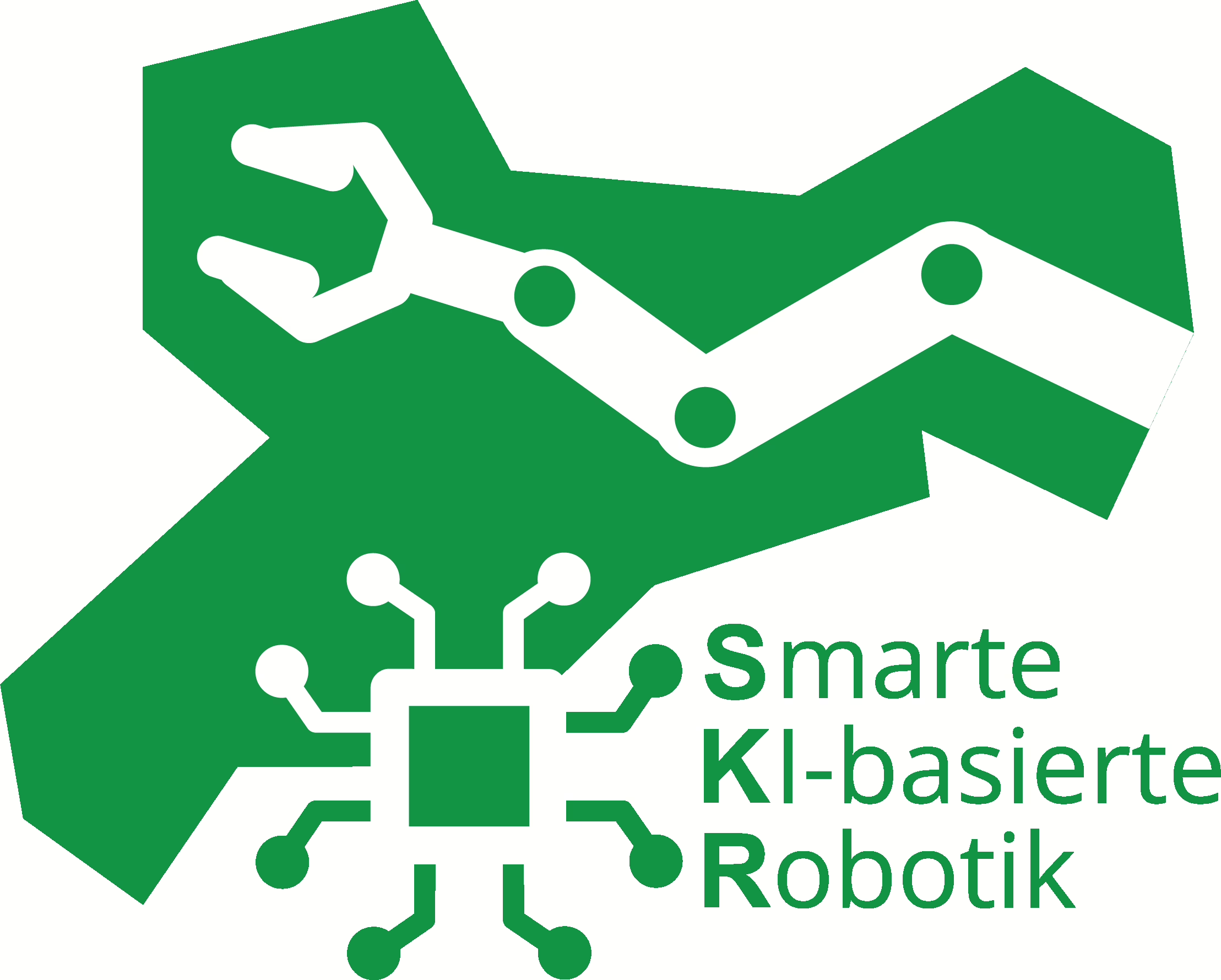
Funding: SAB (Sächsische Aufbaubank), co-financed by the EU, 06/2025 – 12/2027
The research network “Smart AI-based Robotics” (SKR) is doing the fundamental work to form the fragmented and not fully integrated research on robotics in Saxony into a coherent alliance in order to strengthen Saxon industry and research in the long term. In order to create holistic solutions for SCR, context perception and understanding, adaptability, independent task planning and division, system combinatorics, expandability and teamwork as well as the integration of future-proof connectivity and AI chips, sensor fusion & development and methodologies such as computer vision, natural language processing and machine and reinforcement learning are required. Due to these transdisciplinary topics, a wide variety of industries and research branches must be brought together. Added to this are research and application areas from robotics such as software and hardware development. The aim is to systematically network the diverse technological fields of human-technology interaction, communication technology, semiconductor and sensor technology, work planning, logistics and production planning, robotics, software, mechanical engineering, electrical engineering, mechatronics and control technology.
The SKR network will create a central point of contact for cooperation, research, transfer and further training in Saxony.
Funding: SAB, 01/2025 – 12/2027
The InnoTeam “NELAFED” is dedicated to a disruptive challenge in the field of real-time communication: the concept of negative latency. AI-based prediction and signal processing should enable seemingly delay-free data transmission (≤ 0 ms) – with enormous potential for Industry 4.0, XR, teleoperation and robotics.
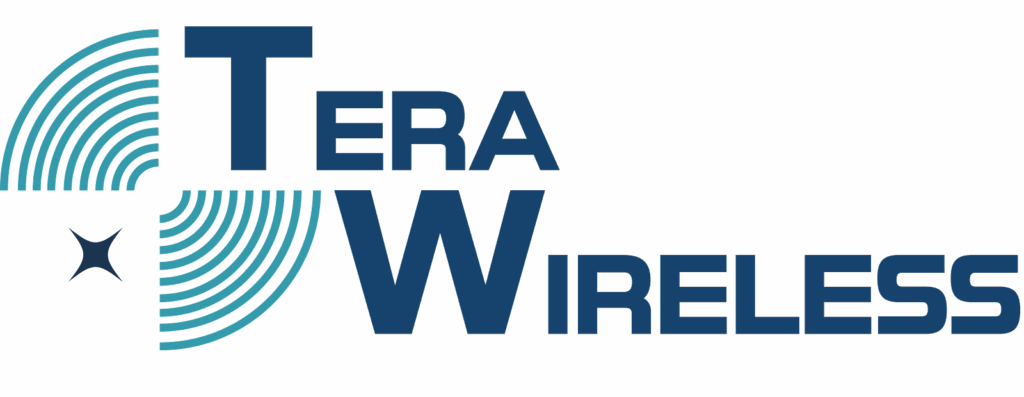
Funding: EU, 03/2025 – 02/2029
Future networks will enable a range of applications that require the extension of fiber-optic quality to wireless connections. This means providing connectivity with extremely high data rates and deterministic performance. The European Telecommunications Standards Institute has recognized terahertz (THz) technology as crucial for future wireless networks. TeraWireless is the first EU training-through-research industrial doctoral network, uniting doctoral candidates and senior supervisors to establish the theoretical, algorithmic, and architectural foundations necessary to enable THz systems that operate at optical speed with deterministic performance.

Funding: BMFTR, 02/2025 – 06/2026
The MoMiKoSy project is part of the Software Campus environment. It focuses on microfluidic molecular communication systems, targeting the transport of information, as well as computing and sensing. The project collaborates with ZEISS.
Funding: BMWK, 07/2025 – 06/2028
In this project, Nokia Bell Labs in Cambridge (UK) will develop a highly sensitive solid-state vector magnetometer based on nitrogen vacancy in diamond (NVD) that operates at room temperature. This NVD vector magnetometer will be further miniaturized so that it can be used not only in hospitals but also in the form of a portable system for everyday use. This could assist ambulatory patients in monitoring their cardiac condition at home or in their daily routine, allowing them to monitor their heart remotely with high resolution and in real time. Due to the highly private nature of personal physiological MCG (PPG) data and associated health information, the Technische Universität Dresden will realize a quantum secure network, the Q-Sense-loT network, for data transmission between the participating potential healthcare facilities to develop the communication system. The device will also use an efficient Al-supported compression method from bitteiler GmbH to reduce the data stream to an easily transferable size.
Funding: SAB, 11/2024 – 10/2027
The automation of production processes is a general guarantee for the prosperity of nations. The current programming process is a complex sequence of multiple iteration cycles and, for example, takes 52 months in automotive manufacturing. The DigiMon consortium is addressing these challenges by developing and providing industry-oriented multi-robot technology, supported by research into corresponding teaching methods as well as process and plant planning methods.
Funding: BMFTR, 02/2025 – 10/2026
ZURONET develops a robotic system to support the rehabilitation of people with neurological disorders (e.g., stroke) and developmental conditions (e.g., ADHD, autism). Collaborative robots (CoBots) are used to promote motor skills and secure long-term therapy success. A demonstrator with advanced algorithms enables natural movements and intuitive human-robot interaction, complemented by an interactive robot head as a communication interface. The system is co-designed with patients, families, and healthcare professionals and is accompanied by scientific evaluation. In the long run, ZURONET aims to launch a certified system for clinics and rehabilitation centers as well as a home-use version, providing efficient and cost-effective support to healthcare.
Funding: SAB, 03/2024 – 08/2026
Robots are increasingly used in everyday life and industry, where safety is critical to protect humans from accidents. The SIRO project develops an inherently safe framework for articulated industrial robots, from cobots to heavy-duty systems, implemented directly on industrial controllers. Existing legal and normative requirements are translated into fully transparent, real-time capable algorithms for motion planning and safety zones. By combining efficient safety calculations with advanced robot motion planning, new forms of human-robot collaboration become possible, such as evasive maneuvers or controlled emergency braking. Equipped with adaptive sensor systems, SIRO robots will reduce downtime, increase productivity, and enhance usability in industrial environments.
Funding: SAB, 08/2025 – 07/2027
The DICOLARO joint project is developing a cobotic system for automating demanding dishwashing processes in commercial kitchens. The goal is to integrate AI-supported motion planning, flexible hardware modules, and safe human-robot interaction. This will improve working conditions, reduce staffing shortages, and provide new insights into real-time control and communication in cobot systems.

Funding: BMFTR, 03/2023 – 04/2025
The Remote project deals with the problem of fully automatic documentation of manual human activities in industrial production processes.
It is focused on the implementation of an ML model, to be used for the recognition of movement patterns using already existing data gloves. The data gloves use sensors to measure human motion changes of hands and fingers and transmit this data to a machine or an information processing system. The aim of the project is to demonstrate the practical feasibility of this approach and to verify its performance in terms of accuracy, robustness and speed.

Funding: EU, 01/2023 – 06/2025
The projects leads the way to the end-to-end (E2E) system design (based on integrated and interacting technology enablers) and the enabling platform delivering novel services for the next generation (6G) of wireless networks. The project continues on the tracks of the Horizon Europe project Hexa-X, which has laid the foundation for the global communication network of the 2030s by developing the 6G vision and basic concepts, including candidate key technology enablers.

Funding: BMWE and BLI (French), 01/2022 – 12/2024
QUARKS targets various social groups to provide them with a comprehensive understanding of quantum resources for future quantum communication networks using innovative dialogical and participatory outreach formats. The aim is also to convey technological knowledge about quantum resources for the communication networks of the future in a way that is appropriate for the target social groups (e.g., school students, specialists from the business world, etc.). The projects also aims to realise experimentally the integration between quantum and non-quantum computing for in-network computing paradigm of future 6G-quantum communication networks.

Funding: EU ECSEL-JU, BMFTR, 05/2021 – 04/2024
AI4CSM aims to support automotive usecases with very strict reliability requirements, strengthening the European semiconductor industry and competence centeres.
We contribute intelligence at the network edge, with in-time provisioning of necessary compute resources at the edge, if possible, and further into the cloud when necessary. Placement of the computation and the impact on expected computational delay are given with confidence bounds.
We also work to interface with partners’ prototypes of n257 devices for high speed connectivity.
Funding: BMWK, 04/2022 – 03/2025
TICCTEC is a satellite project in the German CampusOS call focusing on Open RAN utilization in 5G campus networks. TICCTEC will investigate the conjoint use of Time-Sensitive Networking protocols and 5G mobile communication networks via TSN translators. The aim is to realize deterministic communication from the edge cloud to the device for tele-operated robot and vehicle control. Also, the integration of D2D communication in such an architecture shall be investigated to increase reliability and decrease latency in difficult wireless links.
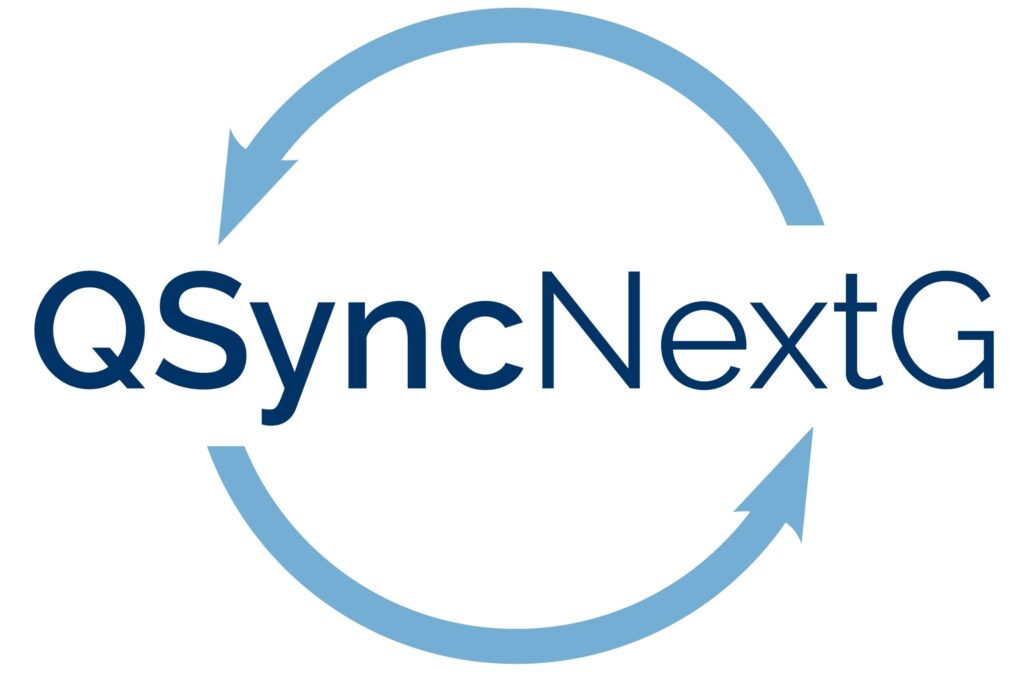
Funding: BSI, 08/2023 – 06/2025
QSyncNextG deals with the design, analysis, test and implementation of quantum synchronisation for 5G/6G communication networks considering low latency communication. The project first deal with the design of 6G protocol stack and functionalities to be integrated with quantum synchronisation. This includes the control plane to manage the quantum and classical resources during the synchronisation procedure. Next, the project also aims at realising a specific demonstrator of the network for testing and performance evaluation.
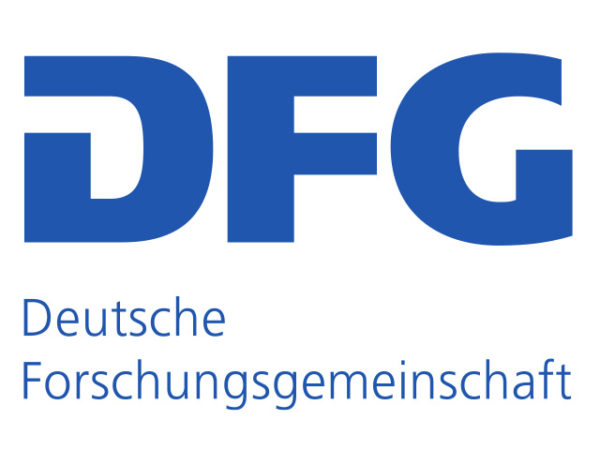
Funding: DFG, 07/2021 – 06/2024
Weaver and Shannon, in 1963, identified three levels of communication. Namely, the technical level, the semantics level, and the effectiveness level. They refer, respectively, to the reliable reproduction of symbols at the destination, the accurate understanding of said symbols, and the effect it produces at the receiver. Claude Shannon decided to focus his “mathematical theory of communication” on the first of these levels. Undoubtedly, this was one of the greatest works of the 20th Century, and their repercussions are deeply embedded in our daily lives. However, today’s communication systems face challenges not present in Shannon’s lifetime (e.g., control of cyber-physical systems). New challenges drive us to ask ourselves what potential gains can we obtain if we consider new communication tasks beyond Shannon’s initial ideas. We aim to investigate communication at the semantics and effectiveness levels, including novel tasks such as common randomness generation and message identification.

Funding: BMBF, 01/2022 – 12/2022
Mobile robots enable the autonomously operating smart factory of the future in the context of 5G. In order for these automated guided vehicles (AGVs) to operate autonomously, reliable localization using the SLAM method is required. This requires high computing power in the AGV, which leads to increased energy consumption and a shorter runtime. This is improved by outsourcing the localization and control to a local cloud.

Funding: BMBF, 01/2022 – 12/2022
Applications in 5G and beyond, e.g. automation, autonomous driving, drones and remote surgery, require a communication system with high availability and data security. One proposal of current research is to use Common Randomness (CR) to achieve this resilience directly at the physical layer. In this project, this technique will be integrated into a real 5G campus network. This is to test the technology for practical use.

Funding: BMBF, 01/2022 – 12/2022
Mobile robots enable the autonomously operating smart factory of the future in the context of 5G. In order for these automated guided vehicles (AGVs) to operate autonomously, reliable localization using the SLAM method is required. This requires high computing power in the AGV, which leads to increased energy consumption and a shorter runtime. This is improved by outsourcing the localization and control to a local cloud.

Funding: BMBF, 03/2021 – 01/2023
With the advance of Industry 4.0, the physical world is being digitalized through the Internet of Things (IoT) and Big Data. This in turn enables the monitoring, control, and optimization of industrial production processes by embedding computation and network. One of the most promising Industry 4.0 applications is Ultra-Reliable and Low-Latency Communications (URLLC) acoustic anomaly detection, which allows predictive detection of potential production failures to avoid machine damage and production downtime. As an essential step in acoustic anomaly detection, the data analysis technique Blind Source Separation (BSS) faces transmission and computational challenges in IoT networks. This project will work on the integration of computing and networking to overcome the challenges on communication networks and analysis systems from BSS, in order to enable URLLC acoustic anomaly detection.

Funding: BMBF, 03/2020-02/2023
Predicting the Quality of Service parameters in communication networks in an end-to-end manner using advanced machine learning methods and tools; Strong focus on mobility of the clients and dynamics of the observed systems.

Funding: SAB, 01/2021 – 12/2023
This project aims to support SMEs in experiencing the possibilities and capabilities of 5G mobile technology through practical demonstrators. By means of these demonstrators from the areas of robotics, sensor technology and positioning, which are adapted to the environment of companies. The SMEs are to experience and comprehend which capabilities the technology offers. In addition to setting up the nomadic 5G mobile communication networks, the construction and conversion of corresponding demonstrators together with the participating companies is an essential goal of the project.

Funding: BMWK, 02/2021 – 12/2024
The project is intended to provide SMEs the opportunity to test 5G campusnetworks for the digitization of their manufacturing line and to validate the network in terms of possible applications, functionality and financial viability. Many companies benefit from the project on the as they receive information on this topic from an independent professional and qualitative source and can check whether this topic is relevant for them. Many companies can thus be shown a first step towards the digitization of their production.

Funding: EU, 01/2021 – 10/2023
The Hexa-X vision is to connect human, physical, and digital worlds with a fabric of 6G key enablers. 2030 and beyond, Europe and the world will face opportunities and challenges of growth and sustainability of tremendous magnitude; proactively tackling the issues of green deal efficiency, digital inclusion and assurance of health and safety in a post-pandemic world will be key. A powerful vision is needed to connect the physical, digital, and human worlds, firmly anchored in future wireless technology and architectural research. The ambition of the Hexa-X project includes developing key technology enablers in the areas of: fundamentally new radio access technologies at high frequencies and high-resolution localization and sensing; connected intelligence through AI-driven air interface and governance for future networks, and 6G architectural enablers for network disaggregation and dynamic dependability.

Funding: BMBF, 08/2019 – 12/2022
In this project we use optical signals in the near infrared range for communication. The IR ray does not penetrate the eye and at a power of less than 10mW it will meet the eye’s safety standards. In addition, IR radiation communication does not suffer from ambient light as noise, which requires less sensitive and less expensive receivers. In general, OW is generally safer than WiFi, which requires encryption and high security to prevent eavesdropping. Both VLC and IR radiation communication ensure good privacy through the walls. In contrast to VLC, IR radiocommunication could enable more secure indoor communication, especially when windows are well coated.
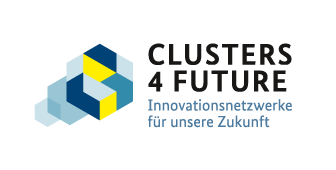
Funding: BMBF, 10/2021 – 03/2022
Die Zukunftscluster (Clusters4Future) sind der Kernbestandteil der Hightech-Strategie 2025 der Bundesregierung und sollen einen besonderen Beitrag zur exzellenten Forschung und zum Wissens- und Technologietransfer leisten. Sie knüpfen mit dem regionalen Ansatz der Clusterförderung unmittelbar an die Spitzenforschung in wichtigen Zukunftsfeldern an und sorgen so dafür, dass technologische sowie soziale Innovationen schneller im Alltag ankommen und mit Hilfe exzellenter Forschung Standorte mit hoher Innovation innerhalb Deutschlands entstehen.
Funding: Deutsche Telekom AG and T-Labs, 04/2021 – 03/2022
Shannon’s work can be summarized in his words as follows: “The fundamental problem of communication is that of reproducing at one point, either exactly or approximately, a message selected at another point.” The solution of that one problem has been the work of researchers and engineers for the past decades, and it has built our complex communication networks. But now, we are at a time when our networks are facing challenges not envisioned by Shannon’s team at Bell Labs, namely the control of cyber-physical systems such as driverless cars or robots in the Industry 4.0, as well as the ultra-resilient and low-latency communication required by the Tactile Internet, just to name a few examples. We believe these problems can be addressed more efficiently by future communication networks by transcending Shannon’s “fundamental problem of communication.” Instead of just the reproduction of a message, we aim to study communication system at different levels, namely the semantic and effectiveness levels identified by Weaver and Shannon in 1963.

Funding: BMBF, 07/2019 – 07/2022
Bauen 4.0 is a BMBF supported cooperative project with the goal of researching and developing innovative, efficient and flexible machines as well as communication technologies to support medium-sized companies in implementation of Industry 4.0 on the site. In this project our chair aims to provide suitable construction site cloud as central data storage, application platform, network access control system and secure gateway for the network.
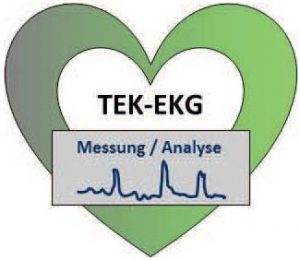
Funding: BMWK, 08/2017- 01/2022
With this research project, a new mobile and highly innovative measuring system (TEK-EKG) for the detection of the thermal and electrical reference behaviour of a wide range of properties as well as the plant operating behaviour is being developed and put into practice.

Funding: 05/2019 – 09/2022
5G Campus is led by our chair. The project explores the possibilities of 5G campus networks and their practical implications. A 5G campus network is an independent 5G infrastructure consisting of a local or regional wireless network with a 5G Core. This infrastructure will be one of the key factors for building innovative wireless machine systems in manufacturing, e.g. robotics automation solutions with human-robotics collaborations, in small, medium and large enterprises.

Funding: Alcatel-Lucent Foundation 10/2020 – 10/2021
ECOMM is to design an end-to-end communication system reducing the energy consumption of heterogeneous user devices by new Eco-friendly network code. In particular, when the heterogeneous devices encode and decode the huge amount of multimedia data, the proposed coding method is expected to allow significant energy reduction while maintaining the quality of the multimedia. In light of the fact that multimedia traffic currently accounts for more than 75% of all Internet traffic, this project can be a meaningful and high-impact solution in relation to environmental issues emerging in 5G.
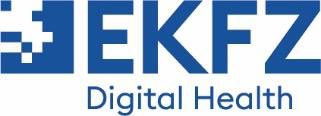
Funding: 12/2019 – 12/2021
The aim of the project CoBot is to improve robotic-assisted rectal resection by developing novel assistance functions based on recent advances in surgical data science, robotic control and distributed network computing. This allows for the first time computer-based assistance beyond the state of the art for rectal resections and paves the way for next-generation robotic surgery. Multiple context-aware assistance functions will be implemented in real-time including visualization of the resection plane, nerves and other vital structures, automatic view stabilization and robotic instrument assistance such as blood suction. As a result we expect several improvements compared to conventional laparoscopic rectal resection such as a reduced operation time, a lower intra- and postoperative complication rate or a reduction of additional adverse events. The project serves as nucleus and basis for a follow-up proposal and a clinical study with well defined end-points
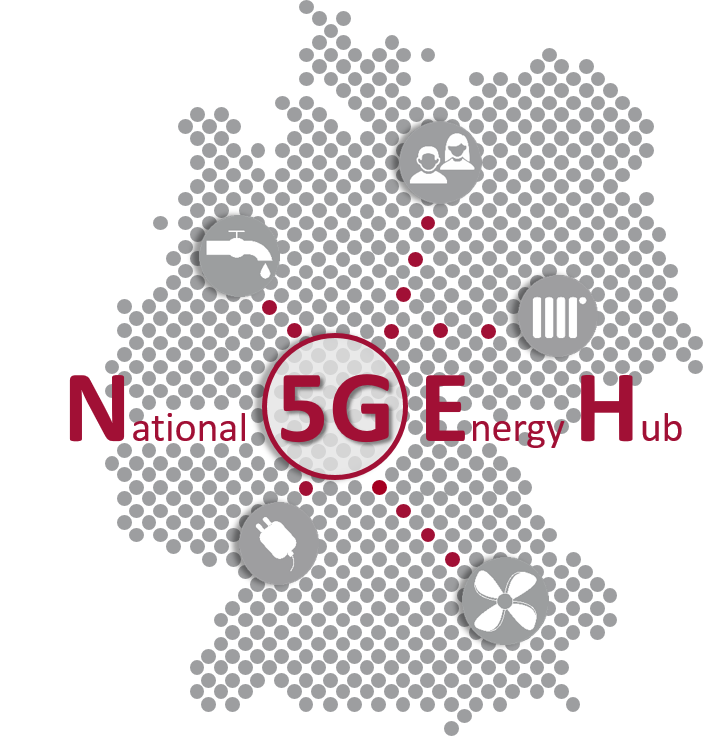
Funding: BMWi, 05/2018 – 04/2020
In the first step of the research project, software and hardware are developed that enable communication between energy applications and higher-level system components. This new toolbox will provide all users of this technology with secure communication access to energy systems and applications. This will enable public institutions and companies to offer new products and services in the energy sector immediately after the planned introduction of the 5G standard in 2020.
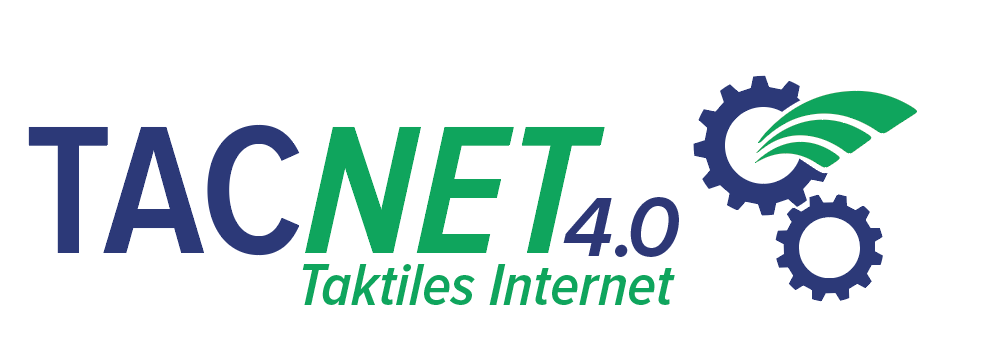
Funding: BMBF, 04/2017 – 03/2020

Funding: BMBF, 2017 – 2020
Fast robotics aims to supplement or replace existing wired communication systems for robots with mobile radio technology. The availability of new mobile communication solutions with high reliability and bandwidth as well as low latency in data transmission enables new control options for robots and robot systems, both fixed and mobile. This includes “distributed motion control”,”simplified integration of external sensors” based on the same communication technologies and mechanisms, etc. The distributed control concepts to be developed in the project consist of a combination of quantitatively significantly improved mobile communication systems in combination with domain-specific communication and control mechanisms. These not only offer advantages for stationary robot systems, but are also a key technology for the future market of mobile service robotics.

Funding: DFG SPP 1798, 10/2015- 12/2020
Joint design of compressed sensing and network coding for wireless meshed networks.

Funding: DFG SFB 912, 07/2015-2019
Our chair is in the Architecture group of HAEC, which bridge between the hardware and the software group closely following the communication demands of the software structure using optimized network coding and routing.
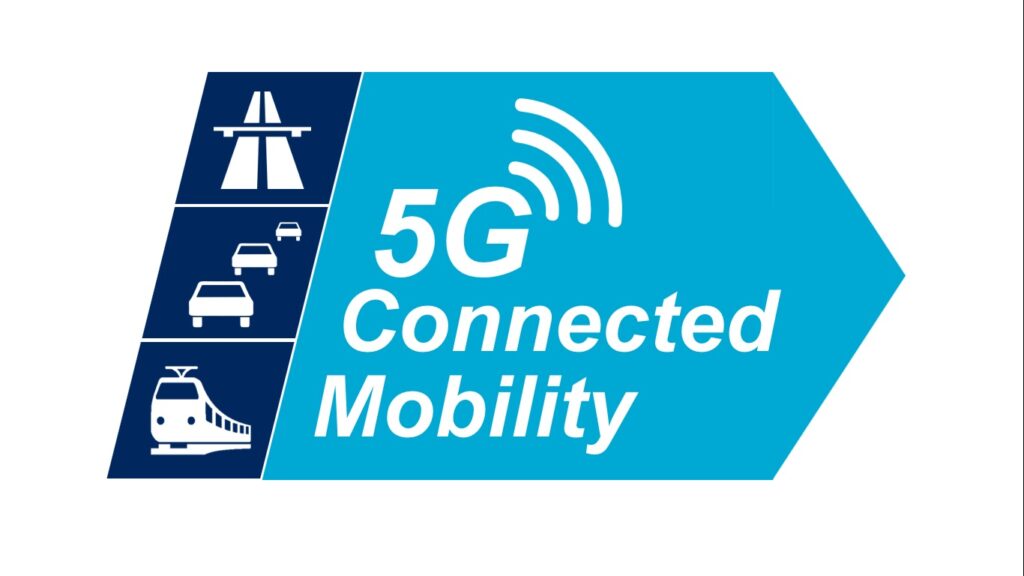
Funding: 11/2016 – 12/2020
5G-ConnectedMobility creates a dedicated network infrastructure and application environment for 5G analysis and testing in real-time for Vehicle-to-vehicle, Vehicle-to-infrastructure, and Railway-to-infrastructure. The project is based on a test track of approx. 30 km along the A9 motorway and a high-speed railway track between Nuremberg-Feucht and Greding in Bavaria, Germany. Founding Members of the “5G-ConnectedMobility” consortium are Ericsson, BMW Group, Deutsche Bahn, the three German mobile network operators with Deutsche Telekom, Telefónica Deutschland and Vodafone, the TU Dresden 5G Lab Germany, the Federal Highway Research Institute (BASt) and the Federal Regulatory Agency (BNetzA). The Federal Ministry of Transport and Digital Infrastructure and the Bavarian Road Construction Administration support the project.

Funding: EU, 01/2017 – 12/2020
SECRET is a collaborative European Training Network which aims to a new deployment of small cells based on the notion of mobile small cells. In particular, our chair is focusing on the design and optimization of network coded cooperative (NCC) networks to deliver disruptive radio networking topologies to emulate mobile small cells to provide femtocell-like services on the move.
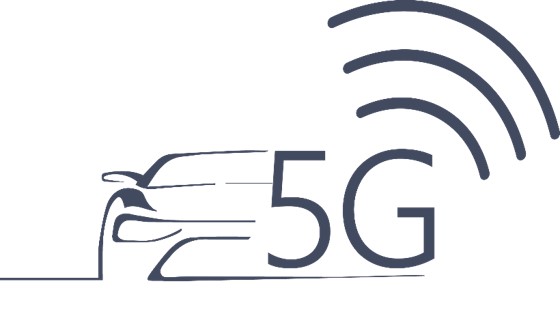
Funding: BMBF, 03/2017 – 02/2020
The goal is to develop a hollistic communication infrastructure for tactile connected cars.
Funding: DFG, 02/2017 – 03/2019
Research in the field of communication technology and control systems engineering for cyber physical systems in realtime.

Funding: ECSEL, 06/2017 – 05/2020
Advancing fail-aware, fail-safe, and fail-operational electronic components, systems, and architectures for highly and fully automated driving to make future mobility safer, more efficient, affordable, and end-user acceptable.

Funding: ESF Nachwuchsforschergrupp, 09/2015 – 08/2018
We focus on the different communication techniques to be employed in the 3D stacked chipset and study the potential for accelerating network coding applications using the multi-core chipstack.

Funding: DFG Clusters of Excellence, EXC 1056, 08/2012 – 12/2018
Our chair is in the Resilience path of CFAED which works on the resilience of the devices made from the non-CMOS materials by the other paths.
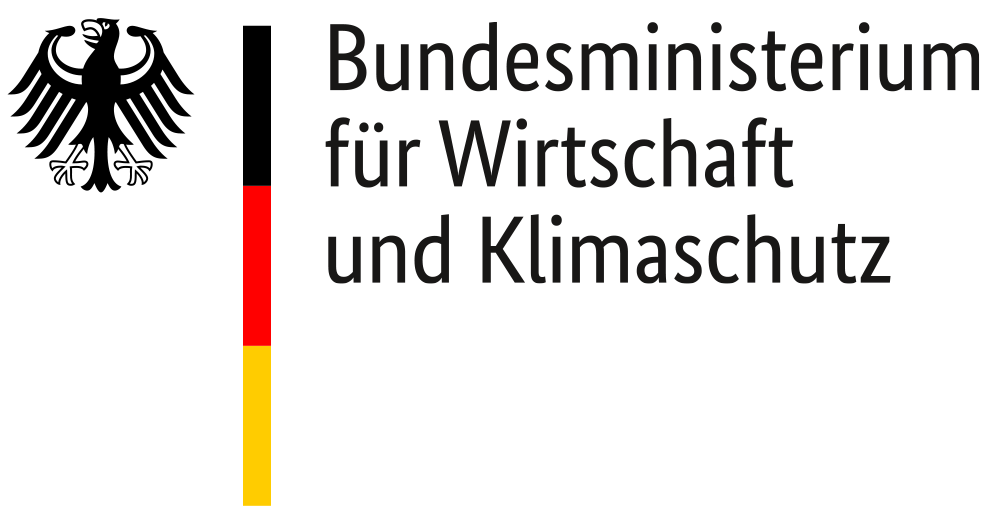
Funding: BMWi, 04/2019 – 10/2019
The goal of KI-Mobil is a concept for disruptive resource-efficient, high performance software platform using AI technologies for mobility concepts. Holistic integration and combination of public and private transportation, logistics, and energy allows for optimisation of comfort, safety and travel times while lowering environmental impact. The ecosystem for third party tools and existing platforms is being enabled as part of the project.

Funding: BMBF, 07/2016 – 02/2020
Goal of the project is real-time control and steering of Cyber Physical Systems can be achieved through agile and distributed cloud applications. The novel concept is the practical implementation through the use of software defined resources (NFV, SDN). With the help of network coding latencies will be reduced while keeping a high level of resilience and safety.

Funding: BMBF, 03/2017 – 11/2020
To withstand the pressure of global competition in industrial production, companies have to speed up their manufacturing processes and optimize the use of resources. They should be able to react to individual requirements of customers and the market fast and flexibly at the same time. Often flexibility is limited by optimized processes though. This creates the need for new procedures that enable both: Cost savings due to improved utilisation of machines and an increase in flexibility.